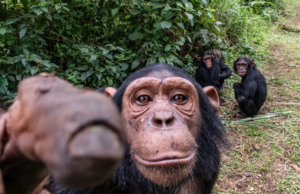Why it was wrong to kill Harambe

Risk to a small child doesn’t immediately justify killing an innocent gorilla. Clive Phillips argues Cincinatti Zoo failed Harambe in choosing to kill him.
The killing of Harambe the gorilla at Cincinnati Zoo this week has aroused public sentiment in a way reminiscent of the public outrage caused by the killing of Cecil the lion.
This was not an isolated incident. On at least two previous occasions small children have accidentally fallen into gorilla pens. On both occasions the children were ‘protected’ by a prominent gorilla in the group, one female and one male, incidents which were heralded as examples of cross species animal altruism.
The incidents occurred in 1986 and 1991 in Jersey Zoo and Brookfield Zoo respectively – when rapid response teams would have been unknown. They demonstrate that gorillas are not dangerous animals.
This is further supported by the fact some witnesses’ reports said that Harambe was actually protecting the child and had not demonstrated any malevolence.
Animal behaviour expert, Professor Gisella Kaplan of the University of New England, has confirmed that gorillas are not inherently aggressive and would likely have not wanted to harm the child – a result of their social lifestyle and herbivorous diet.
Nowadays zoos have Dangerous Animal Response Teams, which in the ten minutes since the boy entered the enclosure made the decision to euthanise the gorilla. Members of this team are typically trained by the police to react to a dangerous animal threatening a member of the public.
Their first priority is for the safety of the public, then zoo staff. Only after these are assured is the animal’s wellbeing considered. As evidence of such a policy, Thayne Maynard, Director of Cincinnati Zoo, expressed public regret for the loss of Harambe as a future breeding male, a loss of genetic diversity, without any consideration for Harambe’s rights.
Zoos should have a policy based on an ethical appraisal of potential incidents based on higher level principles. These would include utilitarian, deontological and virtue ethics principles.
From a utilitarian perspective, the harm caused by shooting Harambe, to him, his family, human witnesses and the public generally, would probably have outweighed the small risk to the child. Harambe’s family will mourn his loss and may even have been traumatised by the event.
Deontologists would argue taking Harambe’s life would never be justified by the small risk to the child – the shooting constitutes a supreme example of a speciesist approach.
Insights from virtue ethics show how this incident has damaged the zoo’s reputation. Public outcry has accused the zoo of having little regard for the rights of its animal occupants – although the safeguarding of the child’s life may be welcomed by some future visitors. Is this the action we would expect of a ‘good’ zoo?
Instead, the zoo seems to have acted from self-interest, afraid of potential litigation should the child be harmed. From a commercial angle a 17 year old gorilla is worth $100,000-$200,000, a child’s life many millions. However, the zoo is likely to experience reduced visitor numbers for a prolonged period, as well as being responsible for damage to the reputation of American zoos more generally.
The zoo may also be liable for placing visitors in a dangerous situation – something not unheard of in zoos around the world. Owners of swimming pools in Australia could teach the zoos a lot about preventing small children entering facilities, with detailed regulations and strict monitoring minimising any risk to children.
Some zoos may have deliberately sacrificed safety for an enhanced visitor experience, with limited barriers between the public and apparently dangerous animals.
Zoo animals already sacrifice many rights for the sake of human entertainment, education, conservation and scientific endeavour. In terms of having a ‘contract’ with zoo animals, in which we provide nutrition, good health and companionship in return for the animals sacrificing their freedom, right to live and reproduce naturally and in a state of good welfare, the terms are heavily stacked in our favour.
Killing a defenceless animal that had not shown any aggression is tantamount to tearing up that contract.
The ethical dilemma over whether to shoot Harambe might have been avoided if a movement known as The Great Ape Project had succeeded. For over 20 years a group of philosophers, primatologists and anthropologists have attempted to gain great apes, including gorillas, rights through the United Nations that would include the right to life.
The movement is based on overwhelming evidence for self-consciousness and other higher level cognitive abilities in great apes, which are undoubtedly greater than in some disabled humans who are adequately protected in law.
Although this has gained support in some minority states, it has yet to gain widespread acceptance, primarily because of determined opposition from scientists who reserve the right to use chimpanzees – another great ape – for medical research. Harambe’s killing may yet prompt a renewed movement to provide legal recognition of the rights of great apes.
Just like Cecil the lion, the killers of Harambe are being judged in the social media. The pattern of argument there suggests that members of the public would have preferred that the zoo accept some risk to the child before taking the extreme action of killing a harmless gorilla.
Professor Clive Phillips is Professor for Animal Welfare at the Centre for Animal Welfare and Ethics at the University of Queensland.
Source: http://www.ethics.org.au/on-ethics/blog/may-2016/why-it-was-wrong-to-kill-harambe

 Español
Español
 Português
Português








